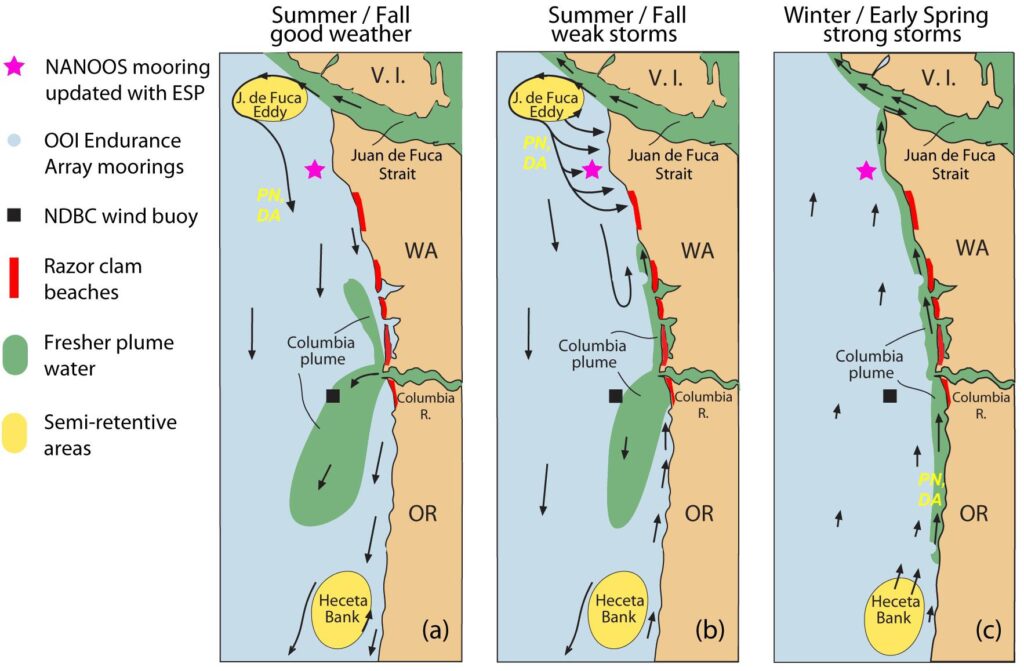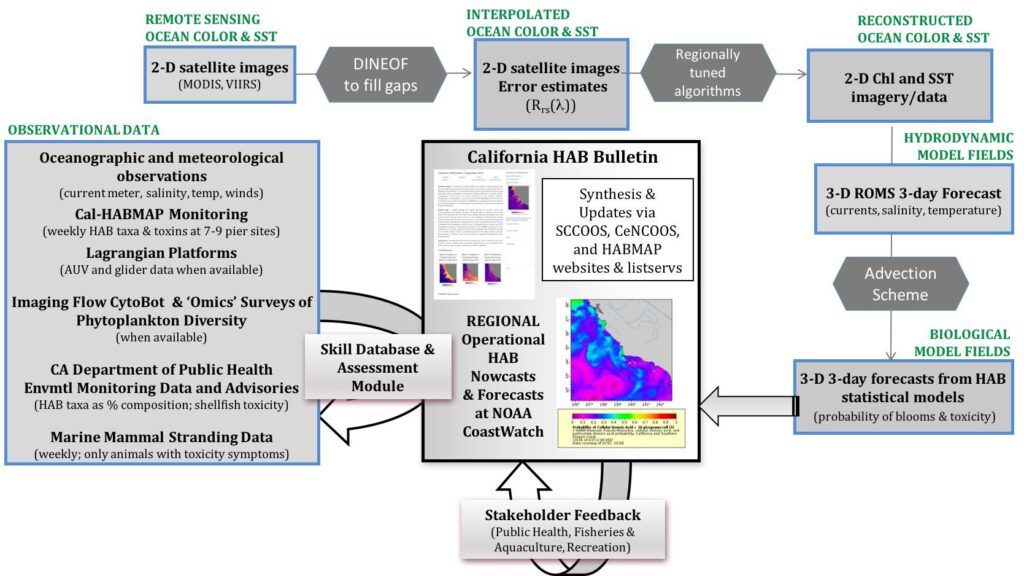NCCOS-supported regional harmful algal bloom (HAB) monitoring programs span the United States and help build a global HAB monitoring and prediction system. A recent article in Frontiers in Marine Science documents the scope of regional HAB observing systems around the U.S. The article uses case studies to highlight the importance of the regional HAB monitoring programs and their role for developing sustained, international ocean observing systems to meet United Nations sustainable development goals. Of the approximately 30 HAB observing systems described in the study, about 70 percent have been or are currently supported by NCCOS science and sponsored research funding.

HABs are a global problem in nearly all freshwater and marine systems, and regional efforts are underway worldwide to create state-of-the-art HAB monitoring and forecasting tools, vulnerability assessments, and observing networks. In the U.S., regional efforts encompass Alaska, Pacific Northwest, California, Gulf of Mexico, Gulf of Maine, Great Lakes, and the U.S. Caribbean islands. The article examines several regional programs in the U.S., European Union, and Asia and concludes that no one-size-fits-all approach exists. The article also gives recommendations for scaling up regional programs to a global observing system for HABs.
The regional HAB observation activities described are supported by NCCOS MERHAB, ECOHAB, PCMHAB, Event Response, Autonomous Sensor Development, and Monitoring and Forecasting programs.
Citation: Anderson, Clarissa R., Elisa Berdalet, Raphael M. Kudela, Caroline K. Cusack, Joe Silke, Eleanor O’Rourke, Darcy Dugan, Molly McCammon, Jan A. Newton, Stephanie K. Moore, Kelli Paige, Steve Ruberg, John R. Morrison, Barbara Kirkpatrick, Katherine Hubbard, and Julio Morell. 2019. Scaling Up From Regional Case Studies to a Global Harmful Algal Bloom Observing System. Frontiers in Marine Science. 22 May 2019. https://doi.org/10.3389/fmars.2019.00250

